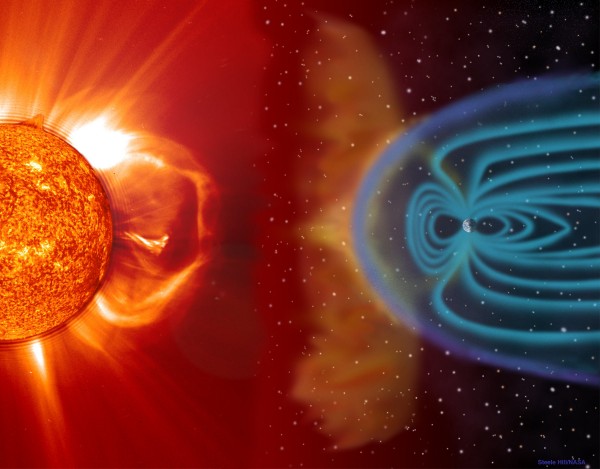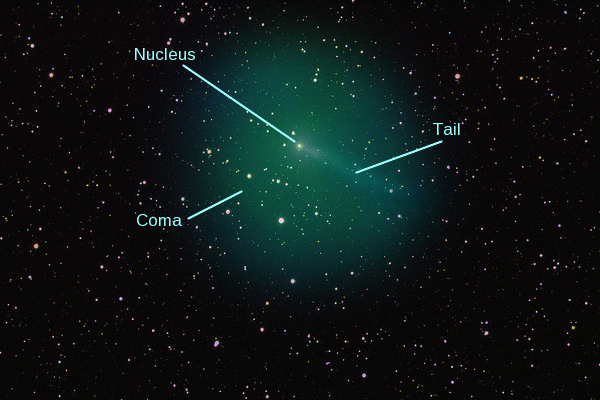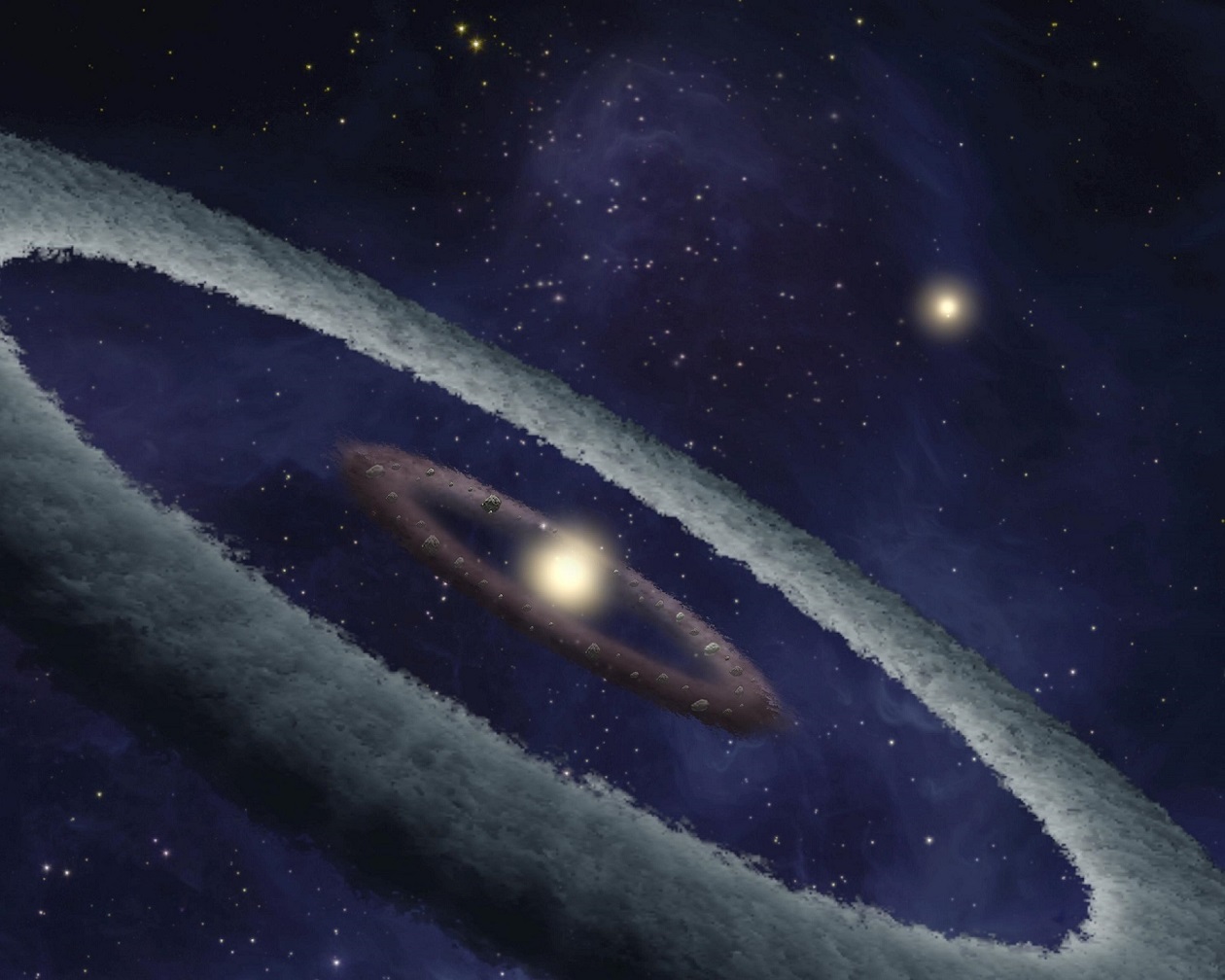Structure of the earth
Article curated by Ed Trollope
We still don't know a lot about what is right underneath our feet, let alone what’s lurking miles down - and there are 6,300km of rock and iron beneath us. The thoughts of distinct layers and a fairly simple system of convection are now long in the past - the Earth’s crust, mantle and core have many unanswered questions about their layers and how they interact. A greater number of improved seismometers may help us slowly piece together what’s really going on below us.

Firstly there's the problem of continental crusts, which form the land we live on. Continents exist on parts of the crust that are thicker than oceanic crust. It is not known how or when these continents formed, plate tectonics cannot currently explain it. As well as not knowing how much continental crust there used to be, there is also no answer to how much there may be in the future. Plate tectonics describes the movement, the continued destruction and creation of the Earth's crust. The continued recycling of the Earth's crusts means that the evidence for what lies in the past is being destroyed. Making it difficult to prove how and why continents were formed.


Heat is carried from the Earth's hot core through the mantle via convection currents. There appears to be some evidence that suggests that this convection may occur in layers and some contradicting evidence that shows its currents act over the whole mantle. Observations of volcanoes show us their are at least two distinct chemical reservoirs within the mantle. This coupled with the fact that earthquakes in subduction zones always stop at the same specific point in the mantle provides the main evidence that convection may be several-layered. However images provide strong evidence for a whole layer. Either way the correct theory must account for the differences observed within the mantle.


 2
2
At the centre of our planet, heating this mantle is the Earth's core. It is known that the core has a solid inner core and a liquid outer core, but a lot of other information is unknown to us. Seismic data has shown that the core shows sideways motion, with one side melting while the other crystallises. Scientists haven't been able to explain why this may be, although it may be due to a large impact such as an asteroid. Seismic data also shows that there may be variations in structures of iron within the core. The extreme conditions in the core make it difficult to recreate it experimentally, in order to study the behaviour of components in the core. Determining all the constituents and the arrangement of atoms within the material in the core remains a struggle for scientists. Establishing the structure of the core is important as its dynamics are key to many other processes here on Earth. For example Earth's internal heat is radiated out from the core, through the mantle in process as mentioned that is also not fully understood. The core is key in making the Earth the way it is, convection of metals in the outer core are responsible for providing Earth with its magnetic field.



The rotation of the Earth's core results in a magnetic field, but some of the mechanisms taking place are not entirely clear. It has however been shown that this magnetic field protects the Earth from cosmic rays, and without it life here would be impossible. Records show that on numerous occasions in the past, the poles of this magnetic field have switched - North became South, and South became North. It is expected that this will happen again, but when the next switching event will occur is a matter of debate. Some believe it may even already be under-way, but most scientists are unsure. There is also a dispute over what the possible effects of a switching event would be. Problems could occur when during the switch the magnetic field offers less protection against the Sun, for example.

The Earth's youth
The magnetic field of the young Earth is something of a paradox for scientists. Analysis of ancient rocks has yielded evidence that billions of years ago the Earth had a powerful magnetic field[1], and simulations[2] of the Earth’s core had provided supporting evidence that the thermal conductivity of iron, under the intense conditions found at the centre of the Earth, was low enough to allow a strong magnetic field. But experiments carried out to simulate the conditions do not agree[3].



The Earth's history is full of mysteries, and we're not even sure where all the material that we now think of as the Earth came from. The vast majority of the Earth's surface - 70% - is covered with water. But where did this water come from? A large quantity of this water would have come from the early formation of the planet - but probably not all of it. Where exactly all the water comes from and how the amount of water on the Earth has varied in the past is still not clear.
Comets and other such objects are also thought to have formed in the early, colder solar system. It's possible that a lot of this water came from the bombardment of the planet in its youth, by asteroids and comets.
Learn more about Origin of Earth's water.


 2
2

It's not just the water we're unsure of, either - the atmosphere is a bit of a mystery, too. Why is there nitrogen in our atmosphere, and how did it get here? In June 2014, a NASA and ESA study[4] found that nitrogen on Saturn's moon Titan may have appeared as a result of the moon forming in the cold gas and dust disk which formed the Sun. Titan - the second largest moon in our solar system is often compared to the Earth, but considered to have frozen in an earlier stage of development. Like water, comets may have been responsible for the arrival of much of the nitrogen we have today - and there's a lot of it! 78% of our atmosphere is nitrogen.
Another common school of thought is that when the Earth was very young, it had an atmosphere composed of mainly hydrogen and helium, but these light elements simply floated away from our planet and were replaced by a thicker, heavier atmosphere of carbon dioxide, ammonia (a nitrogen compound) and water vapour by volcanic activity. However, the question of how ammonia came to be in the inner regions of the Earth still remains unanswered.


We may not know how the Earth's oceans or atmosphere came to be here, but at least we have a fairly good idea about the Earth itself. Or do we? While Venus, Earth and Mars all have similar proportions of volatile elements (material which become gas at comparably low temperatures, like water), exactly where these materials originated remains a big question in planetary science, with comets once again being a prime suspect.
Learn more about Original of volatile elements in the terrestrial planets.



The Coastline Paradox
How long is our coastline? It seems like a very simple question, yet it's actually a problem as the coastline of a landmass doesn't have a well-defined length. Different methods often result in very different lengths that depend on the detail with which the coastline is measured. Imagine you have the task of measuring the coastline for a small island. You could look at a map, or a satellite image, draw a circle around it and take the length of that circle. But what if there's a small bay, or a peninsula sticking out? You can change your line... but as you zoom in and look closer, you will find more and more small changes that need to be made, and all them will increase the size of your answer. This fractal structure of coastlines is at the root of this particular problem. Some ‘official’ figures for coastlines can even vary by up to a factor of four. These large discrepancies can be a real problem, with everyone unsure which figure they should adopt, and whether measurements they wish to compare were made using the same technique. In order to avoid a wide range of estimates for coastlines scientists need to devise a way in which the method for finding these lengths can be standardised.


This article was written by the Things We Don’t Know editorial team, with contributions from Ed Trollope, Jon Cheyne, Cait Percy, Johanna Blee, Grace Mason-Jarrett, and Adam Stevens.
This article was first published on 2015-10-12 and was last updated on 2018-02-17.
References
why don’t all references have links?
[1] Tarduno, J., A., et al., (2015) A Hadean to Paleoarchean geodynamo recorded by single zircon crystals Science 349 (6247):521-524 DOI: 10.1126/science.aaa9114
[2] Zhang, P., Cohen, R., E., and Haule, K., (2015) Effects of electron correlations on transport properties of iron at Earth’s core conditions Nature 517:605-607 DOI: 10.1038/nature14090
[3] Gomi, H., et al., (2013) The high conductivity of iron and thermal evolution of the Earth’s core Physics of the Earth and Planetary Interiors 224:88-103 DOI: 10.1016/j.pepi.2013.07.010
[4] Mandt, K.E., et al., (2014) Protosolar Ammonia as the Unique Source of Titan's nitrogen. The Astrophysical Journal Letters 788:L24 DOI: 10.1088/2041-8205/788/2/L24
Recent structure of the earth News
Get customised news updates on your homepage by subscribing to articles












